So Chic! Oscar de la Renta Fashions from the MFAH Collection December 4, 2017
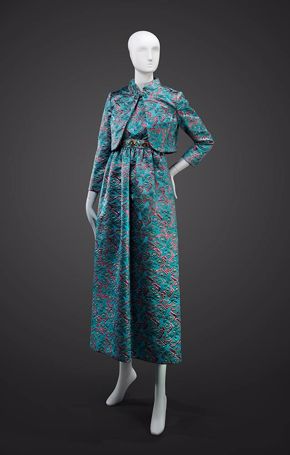
Oscar de la Renta, Evening Ensemble, 1960–69, silk, metallic thread, brilliants, plastic beads, sequins, and feathers, the Museum of Fine Arts, Houston, gift of Margaret Alkek Williams.
Oscar de la Renta, Evening Ensemble (detail), 1960–69, silk, metallic thread, brilliants, plastic beads, sequins, and feathers, the Museum of Fine Arts, Houston, gift of Margaret Alkek Williams.
Oscar de la Renta, Coat and Dress Ensemble, fall 1968, novelty weave fabric, fur, and brilliants, the Museum of Fine Arts, Houston, gift of an anonymous lady.
Oscar de la Renta, Coat and Dress Ensemble (detail), fall 1968, novelty weave fabric, fur, and brilliants, the Museum of Fine Arts, Houston, gift of an anonymous lady.
Oscar de la Renta, Evening Ensemble, Style 5220, fall 1989, silk satin, velvet, silk floss, metallic thread, bugle beads, and faux pearls, the Museum of Fine Arts, Houston, gift of Carolyn Farb.
Oscar de la Renta, Evening Ensemble, Style 5220 (detail), fall 1989, silk satin, velvet, silk floss, metallic thread, bugle beads, and faux pearls, the Museum of Fine Arts, Houston, gift of Carolyn Farb.
Oscar de la Renta, Evening Dress, fall 1990, velvet, paste gems, metallic embroidery thread, bugle beads, faux pearls, metal coil, and metallic ribbon, the Museum of FIne Arts, Houston, gift of the collection of Baroness Sandra di Portanova from her loving brother.
Oscar de la Renta, Evening Dress (detail), fall 1990, velvet, paste gems, metallic embroidery thread, bugle beads, faux pearls, metal coil, and metallic ribbon, the Museum of FIne Arts, Houston, gift of the collection of Baroness Sandra di Portanova from her loving brother.
Installation view of The Glamour and Romance of Oscar de la Renta: The Coat and Dress Ensemble from the MFAH collection is on view next to the custom wedding dress that de la Renta designed for his stepdaughter, Eliza Bolen, in 1998.
Installation view of The Glamour and Romance of Oscar de la Renta: Evening Dress from the MFAH collection (far right) is on view alongside other Russian-inspired designs in the exhibition’s Eastern gallery.
The Glamour and Romance of Oscar de La Renta celebrates the Dominican Republic–born designer by exploring major influences reflected in his fashions, season after season. De la Renta was especially inspired by Spain, the East, and the garden, and he imaginatively layered these themes in his designs.
Looking closely at the details on four ensembles—all featured in the exhibition and pulled from the Museum’s own permanent collection—reveals how he incorporated these influences. Spanning the 1960s to the 2000s, these ensembles show the creative range of Oscar de la Renta, whose designs are regarded as ultimate expressions of femininity and elegance.
The influence of Spain dates to de la Renta’s formative years as an art-school student living in Madrid in the 1950s. The country’s art and culture—especially flamenco dancing and bullfighting—made a great impression on him. For the design of a 1960s evening ensemble (pictured here), de la Renta inventively layered the influences of the garden and Spain.
By pairing a bolero jacket with an evening dress, de la Renta creatively adapted a Spanish silhouette traditionally worn by matadors during bullfights. His love of nature is seen in the colorful fabric with its turquoise and pink butterfly pattern. Another de la Renta signature is ornate embellishments, shown in the bands of beads, sequins, and metallic thread accenting the dress’s neckline, back, and waist.
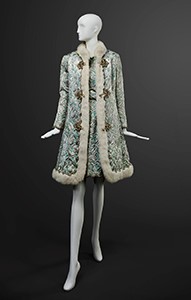
Evening Ensemble (detail), 1960–69
The designer layered references to the East along with nature-inspired motifs in this coat and dress ensemble:
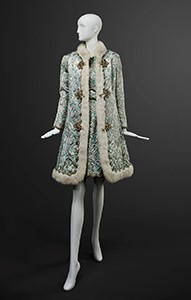
Coat and Dress Ensemble, fall 1968
De la Renta often began his design process by selecting the textiles first, and here he chose a beautiful fabric woven with an all-over leaf motif. Looking to China for inspiration, he incorporated the ornate clasps on the coat to reference historic precedents in Eastern costume, and the fur trim evokes a romantic idea of Russia.
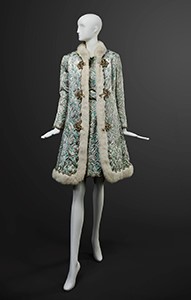
Coat and Dress Ensemble (detail), fall 1968
Russia’s influence is also evident in this evening ensemble, designed two decades later:
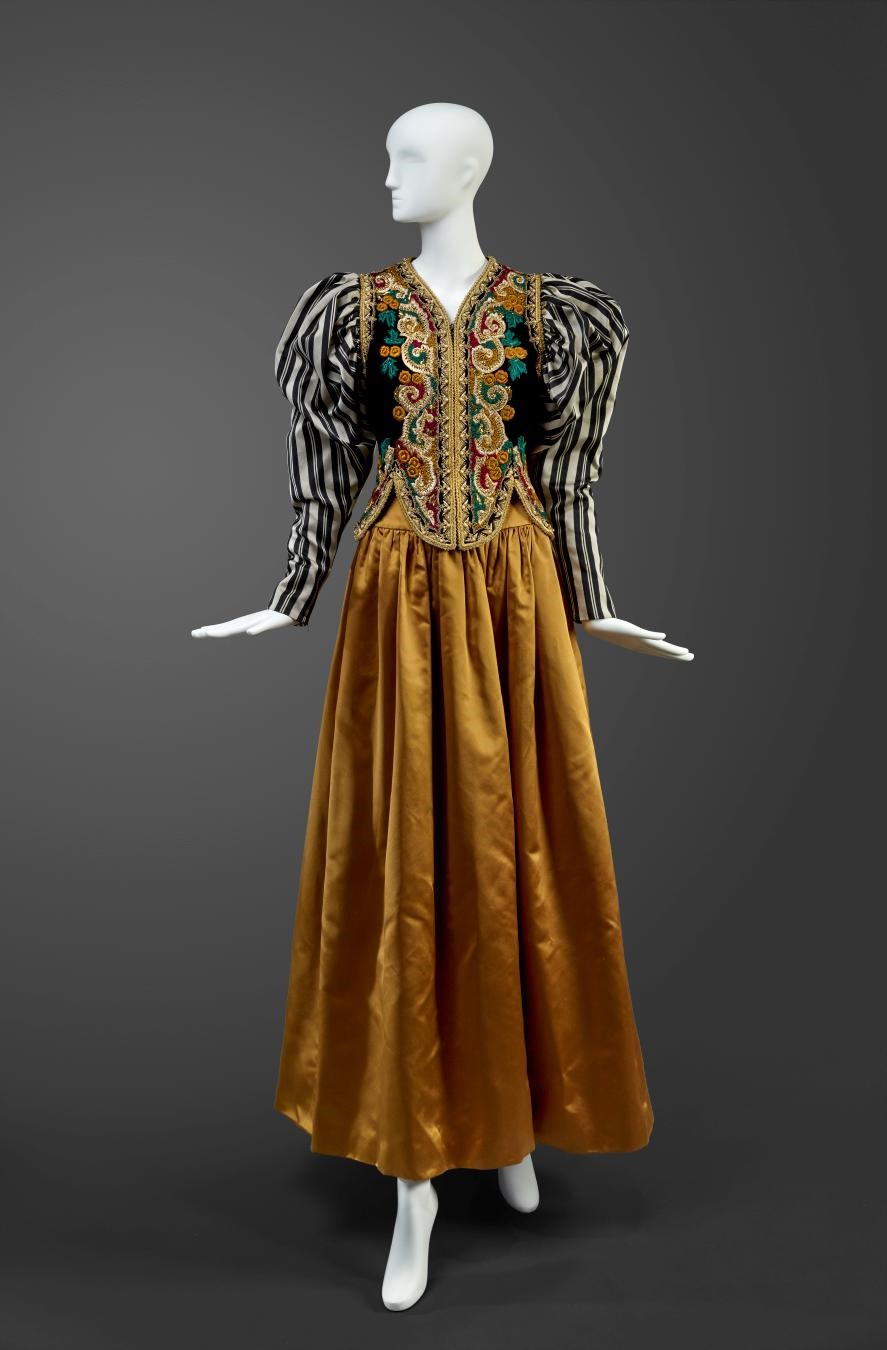
Evening Ensemble, fall 1989
De la Renta, fascinated by the opulence of St. Petersburg’s royal-court culture during the reign of Catherine the Great, was greatly interested in historical fashion. For this evening ensemble, he revived the voluminous gigot, or leg-of-mutton sleeve, which was fashionable the 1890s—adding a sense of drama. The tradition of embroidery in Russian court dress inspired the floral embroidery embellishing the bodice.
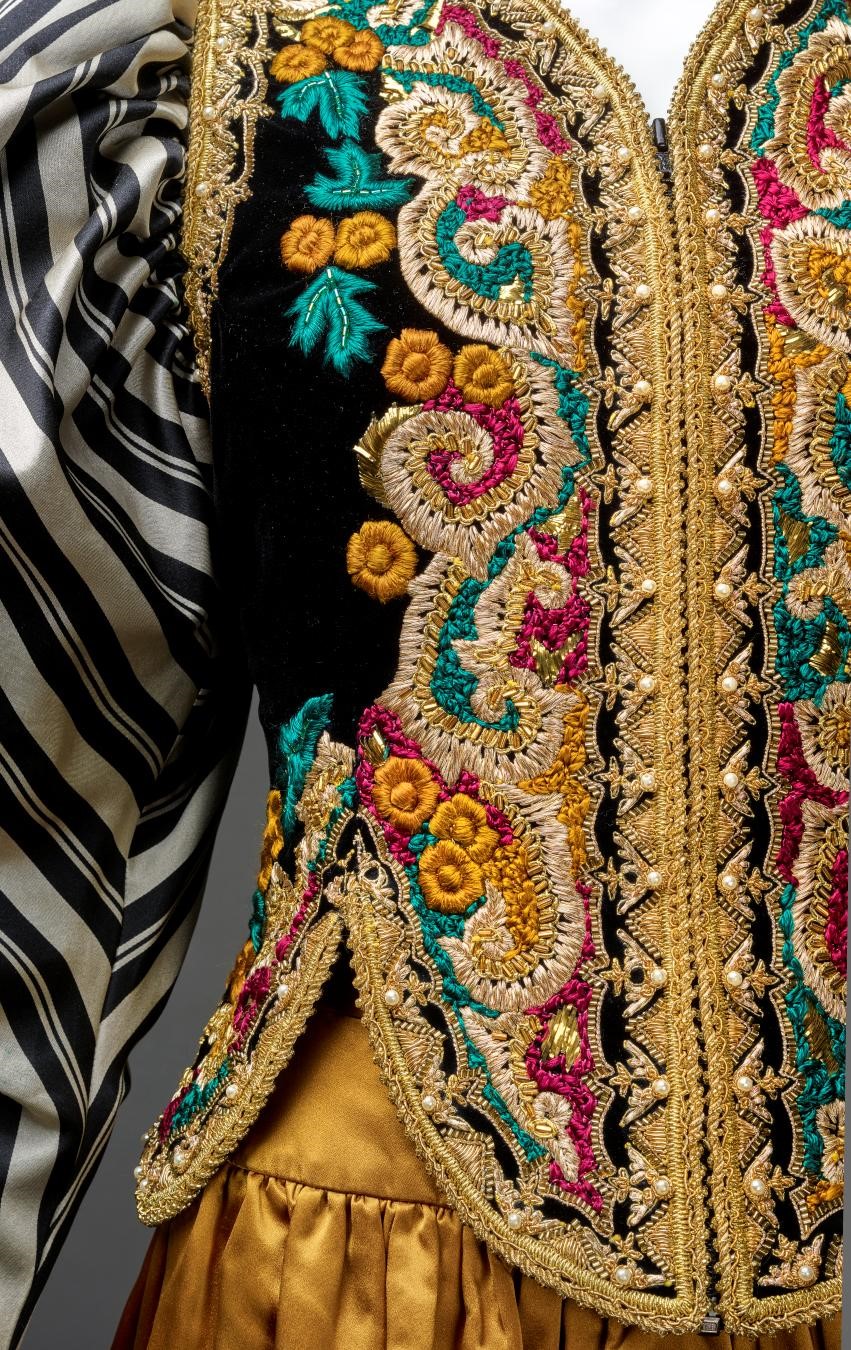
Evening Ensemble (detail), fall 1989
A romanticized allusion to Russia is seen in the elaborate cuffs accenting this velvet evening dress:

Evening Dress, fall 1990
De la Renta is well known for the intricately embroidered accents on his designs. Here, the cuffs are embroidered with gold metallic thread, beads, faux pearls, and imitation gems, as well as tassels, adding a luxurious touch to a sleek and elegant silhouette.
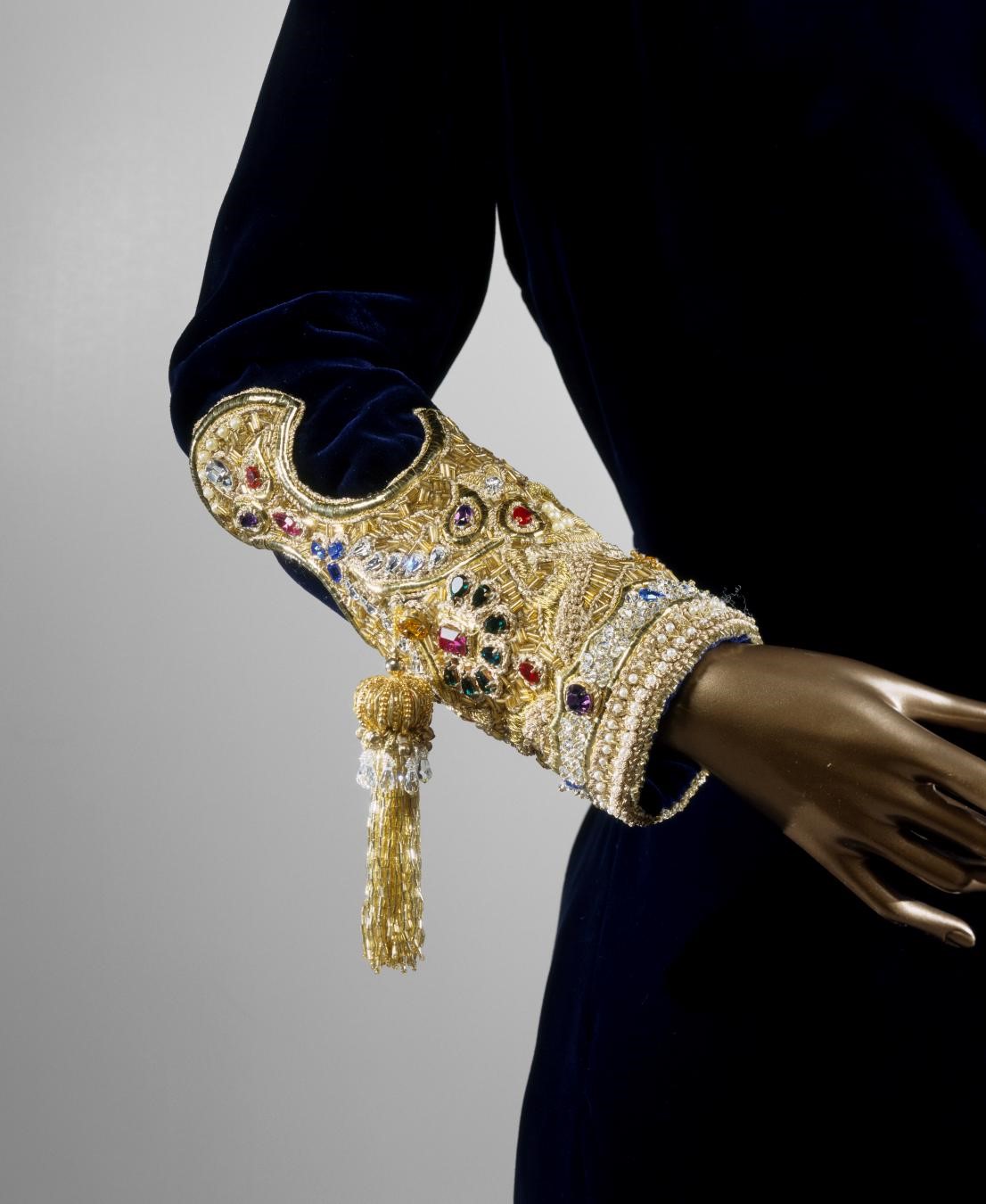
Evening Dress (detail), fall 1990
See these ensembles—along with more than 60 other styles on loan from around the world—in “The Glamour and Romance of Oscar de la Renta,” on view in the Beck Building through March 18.





